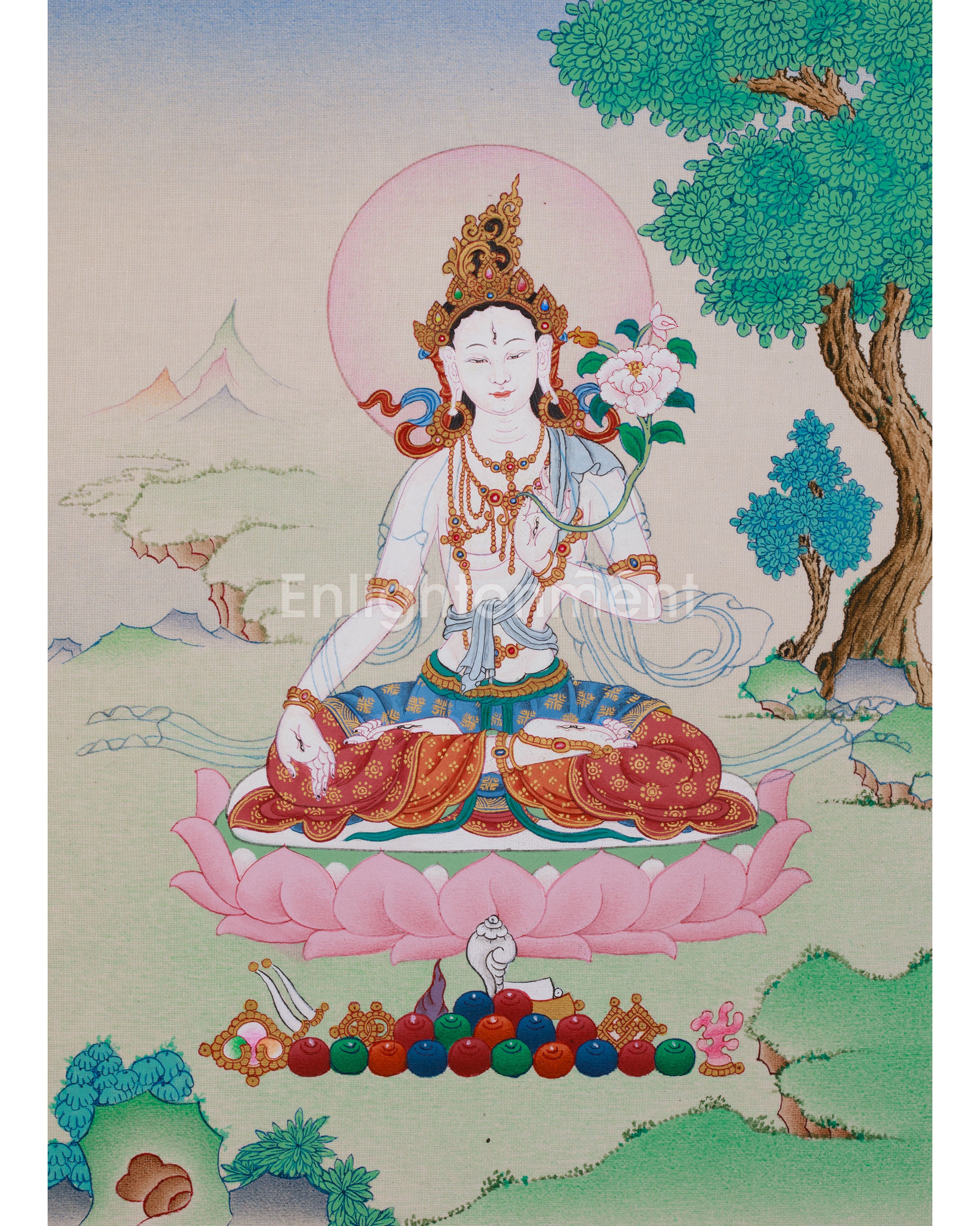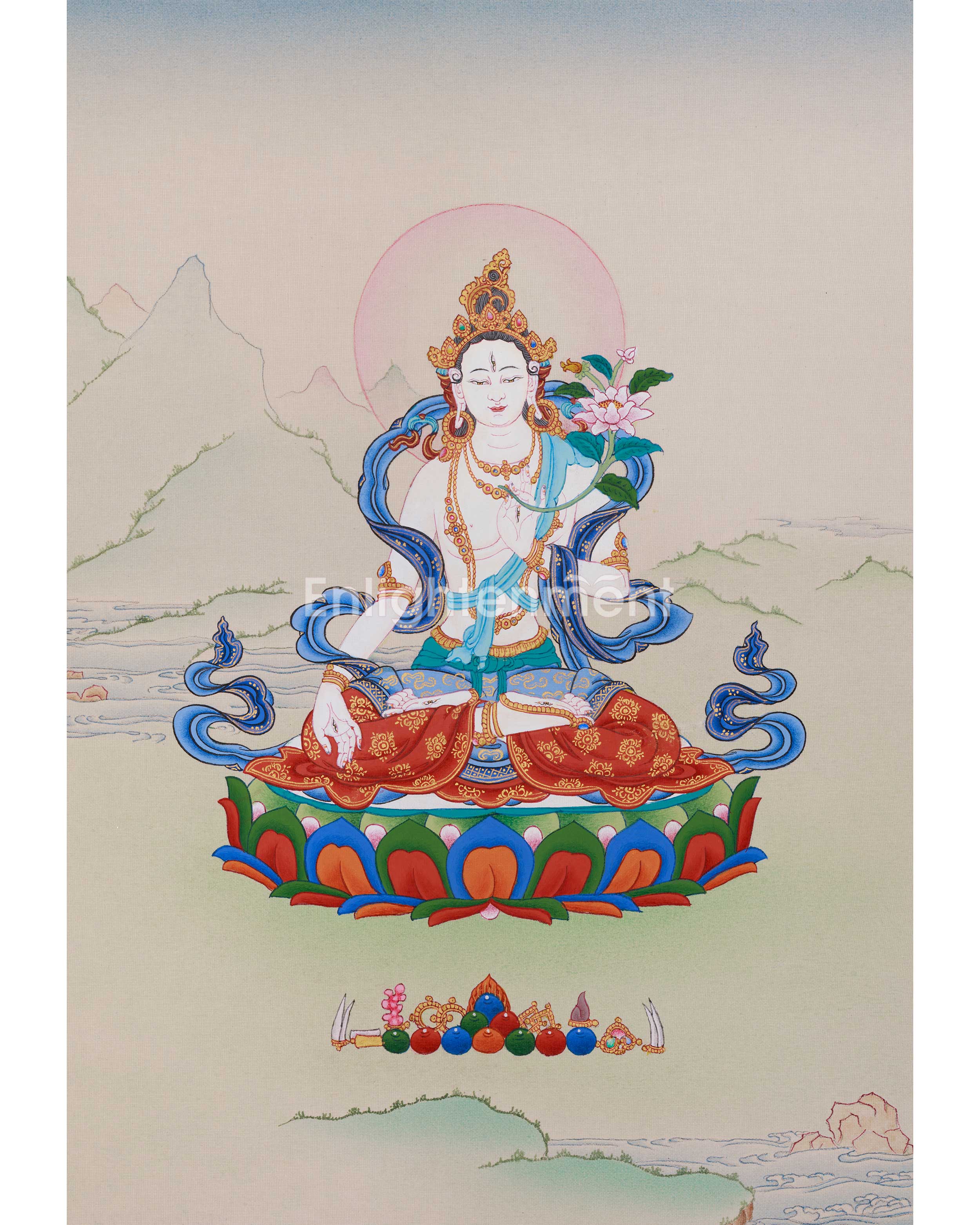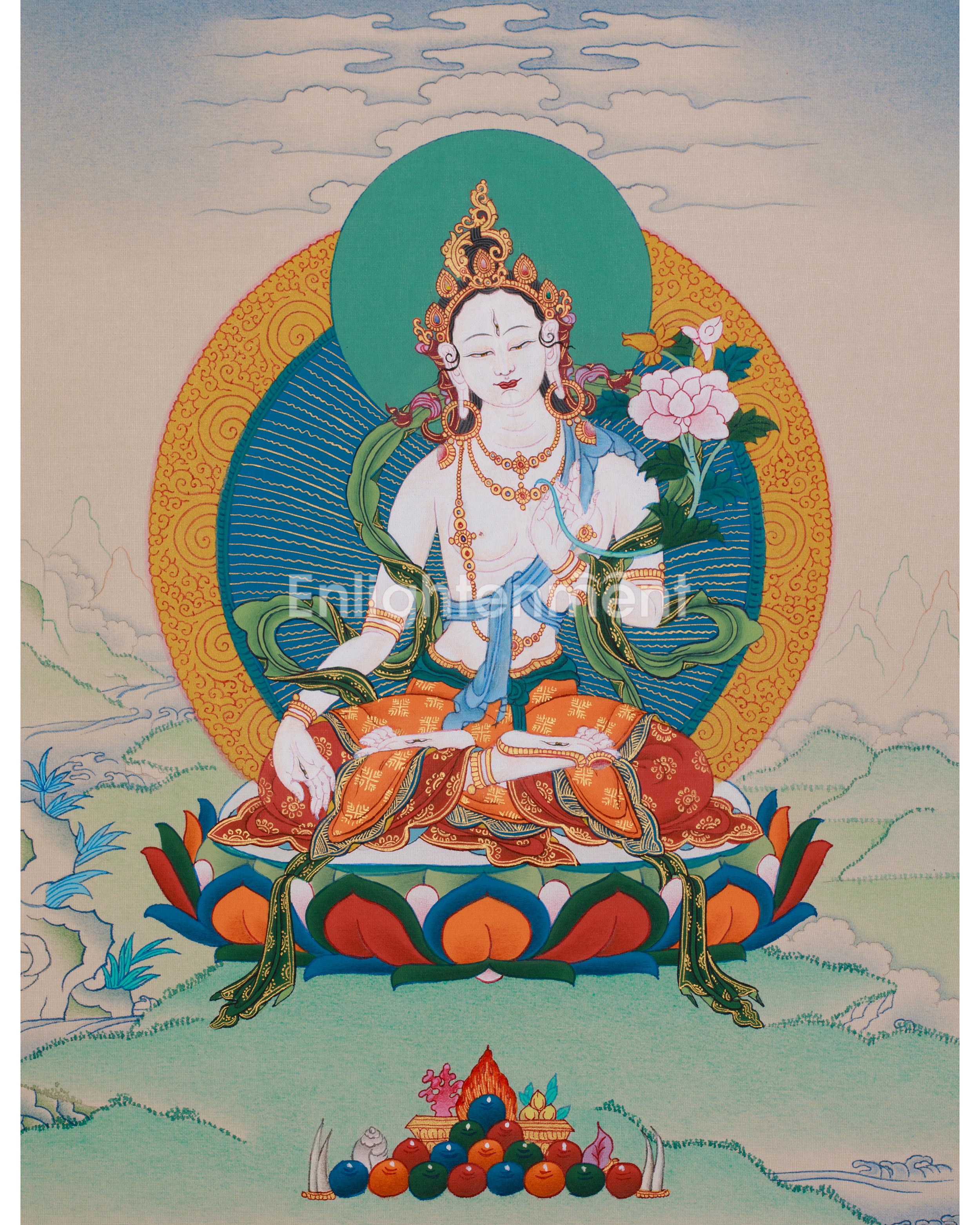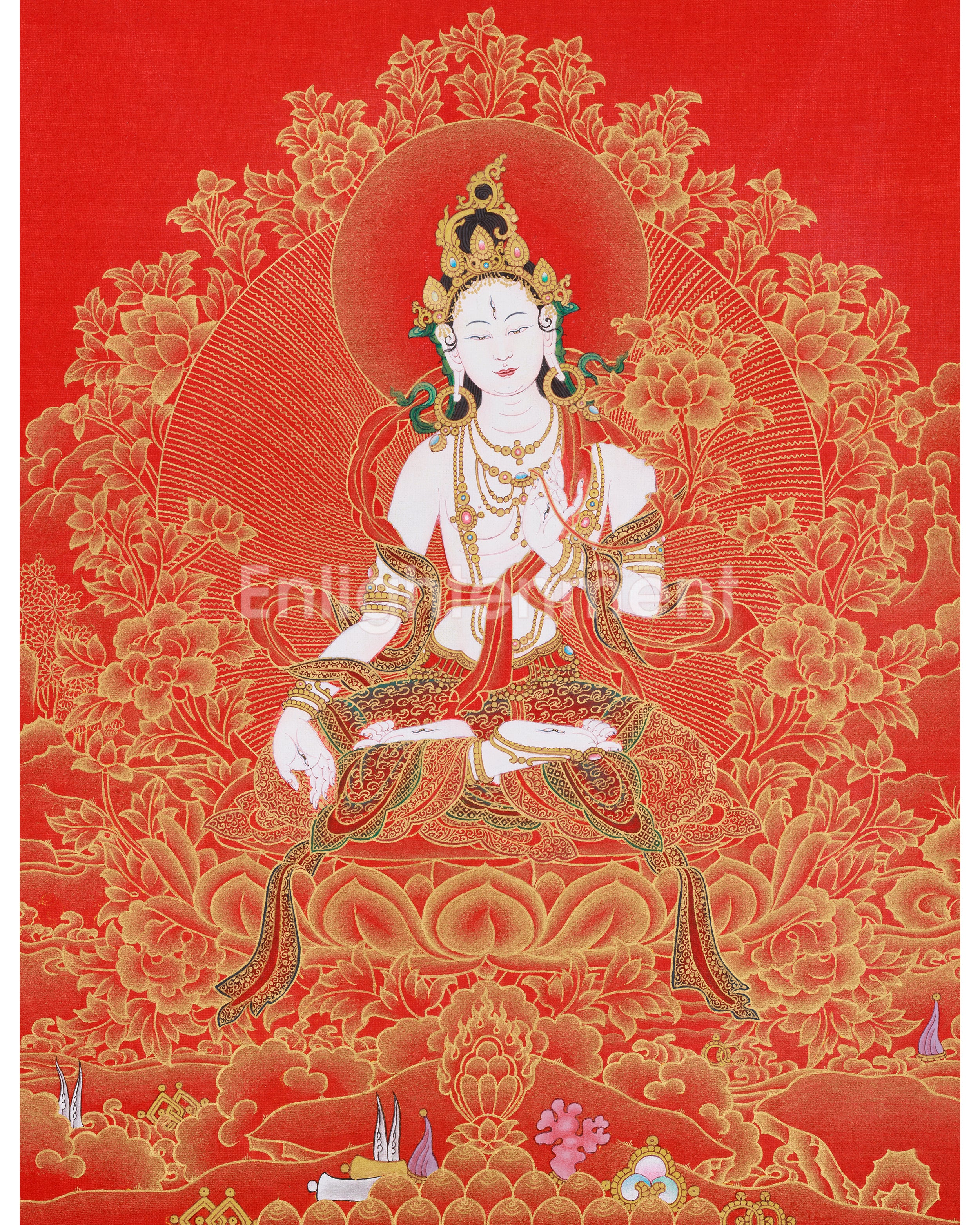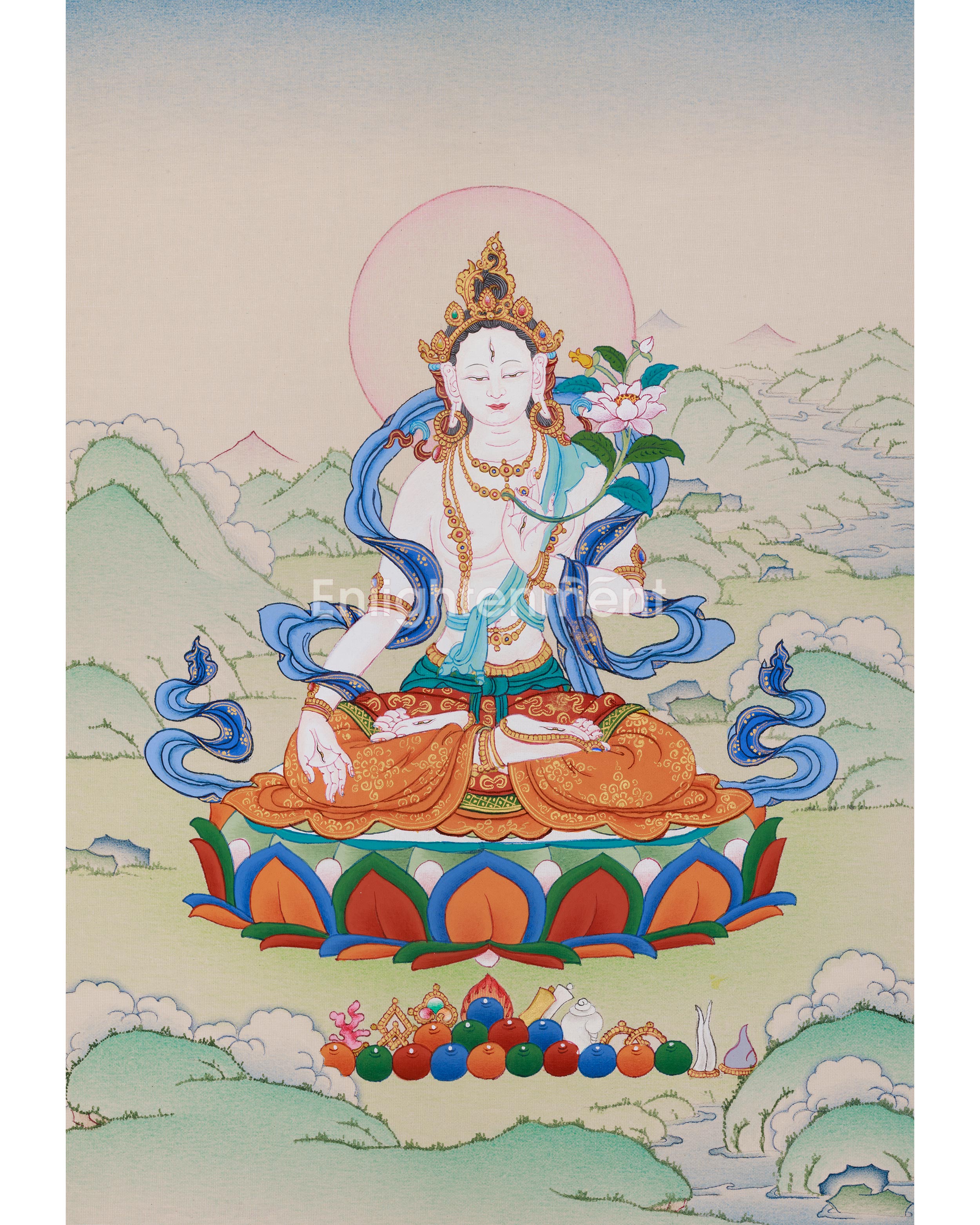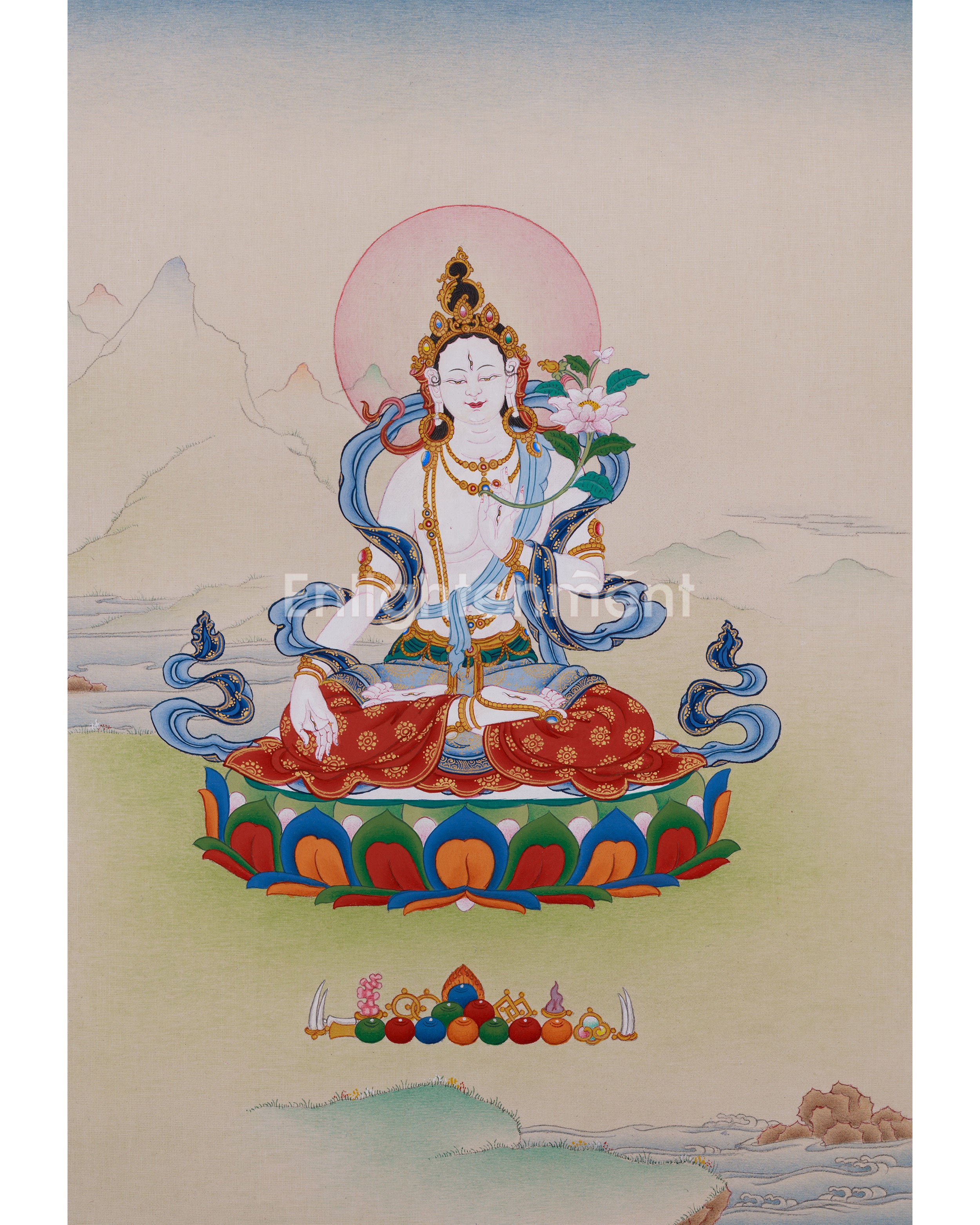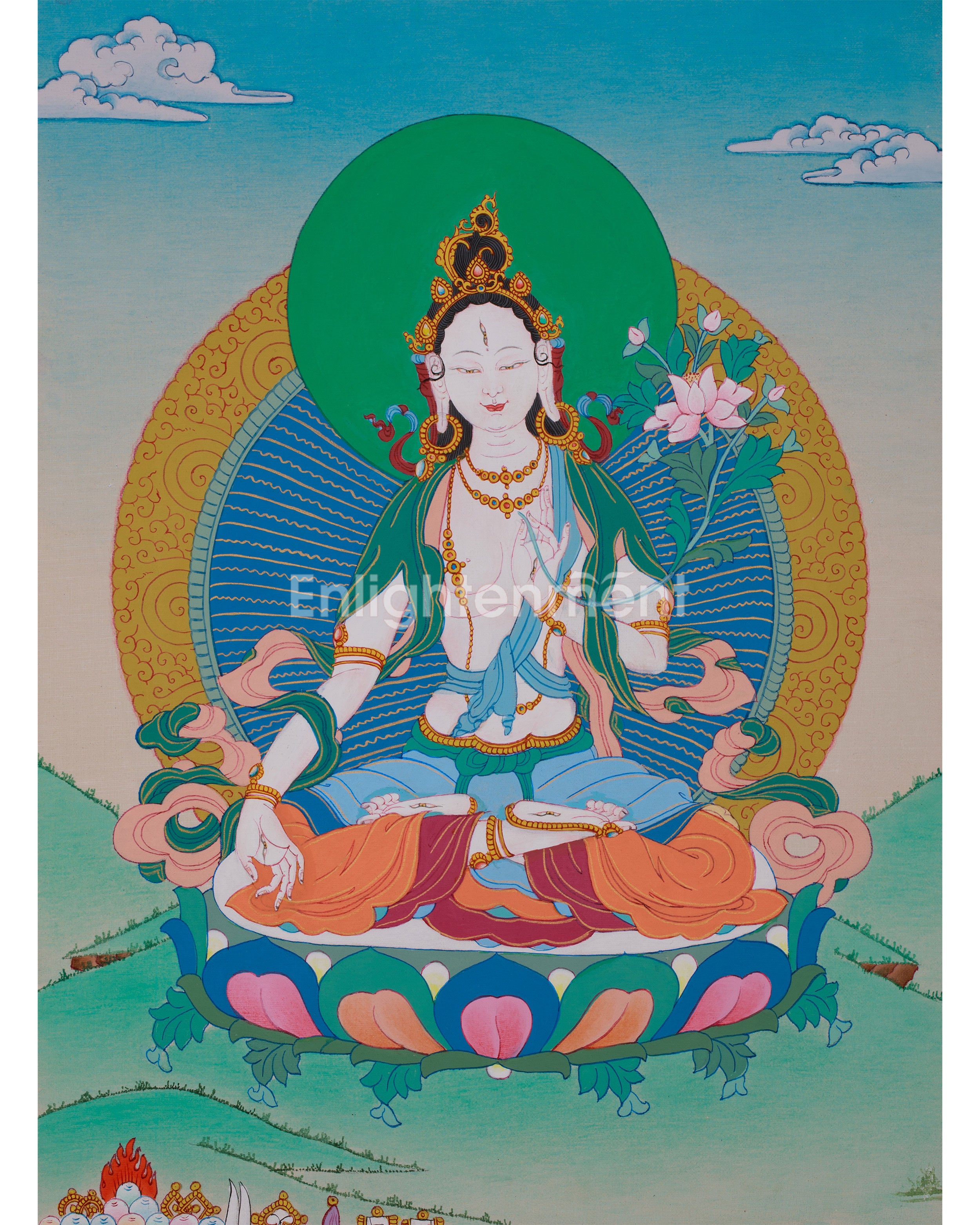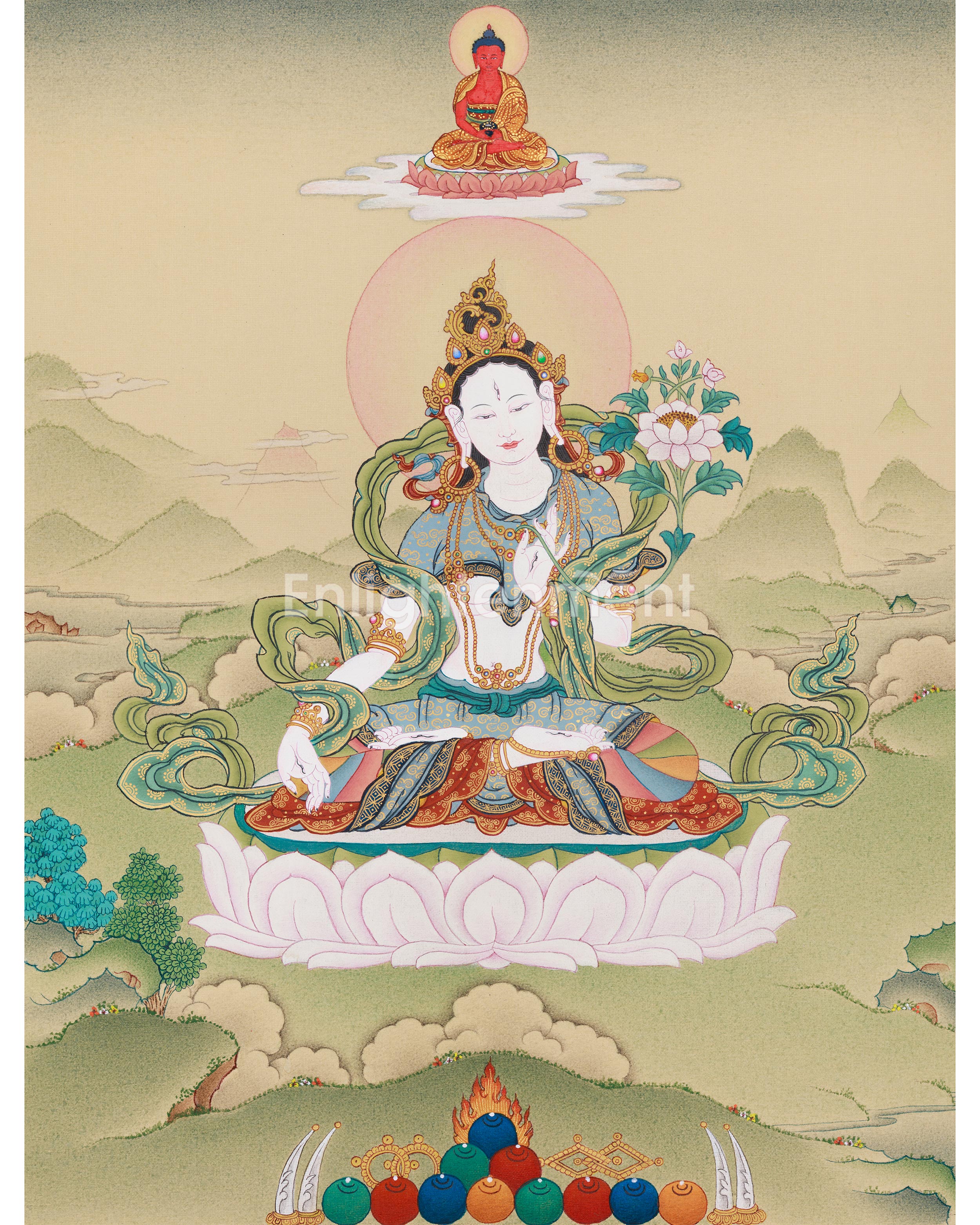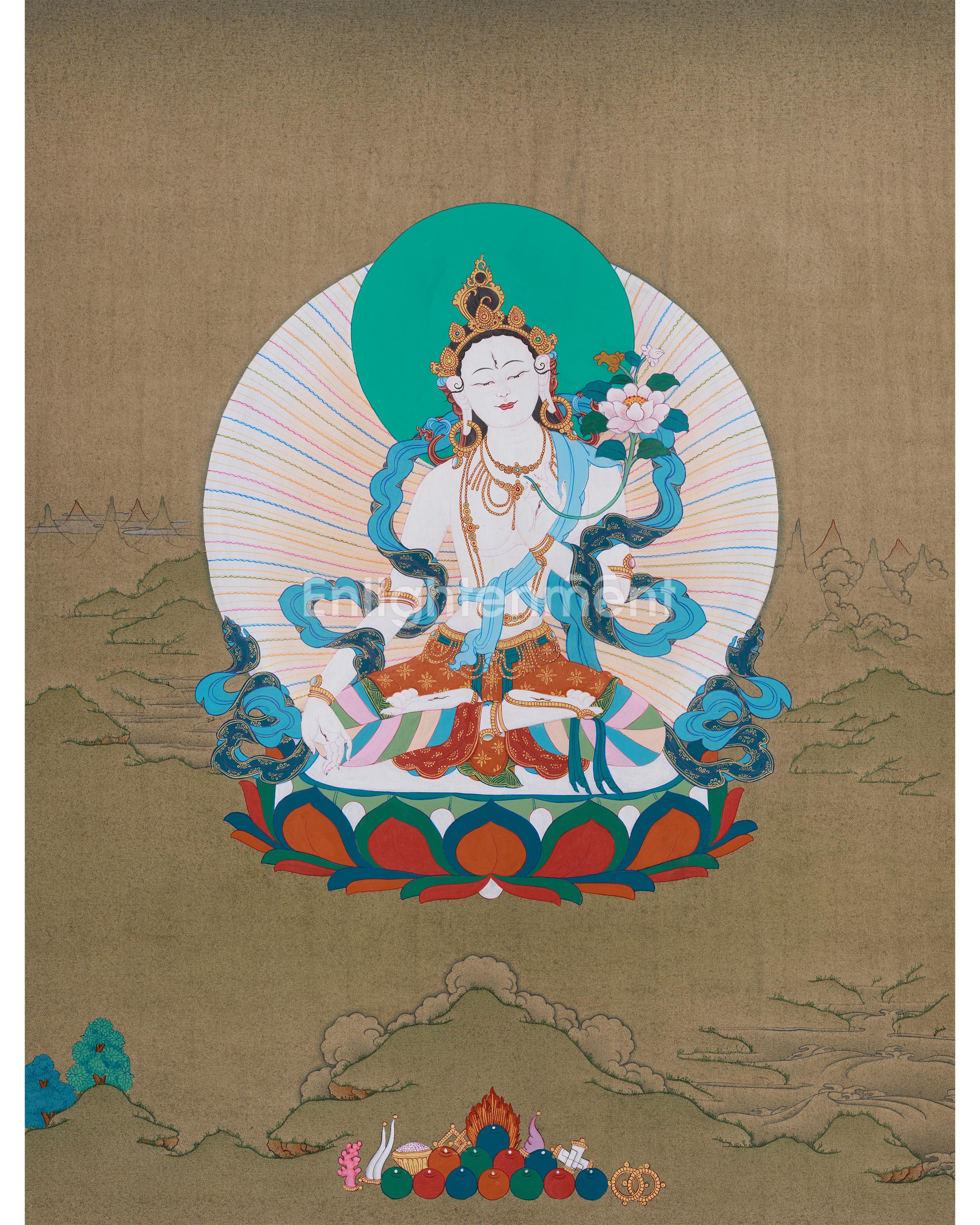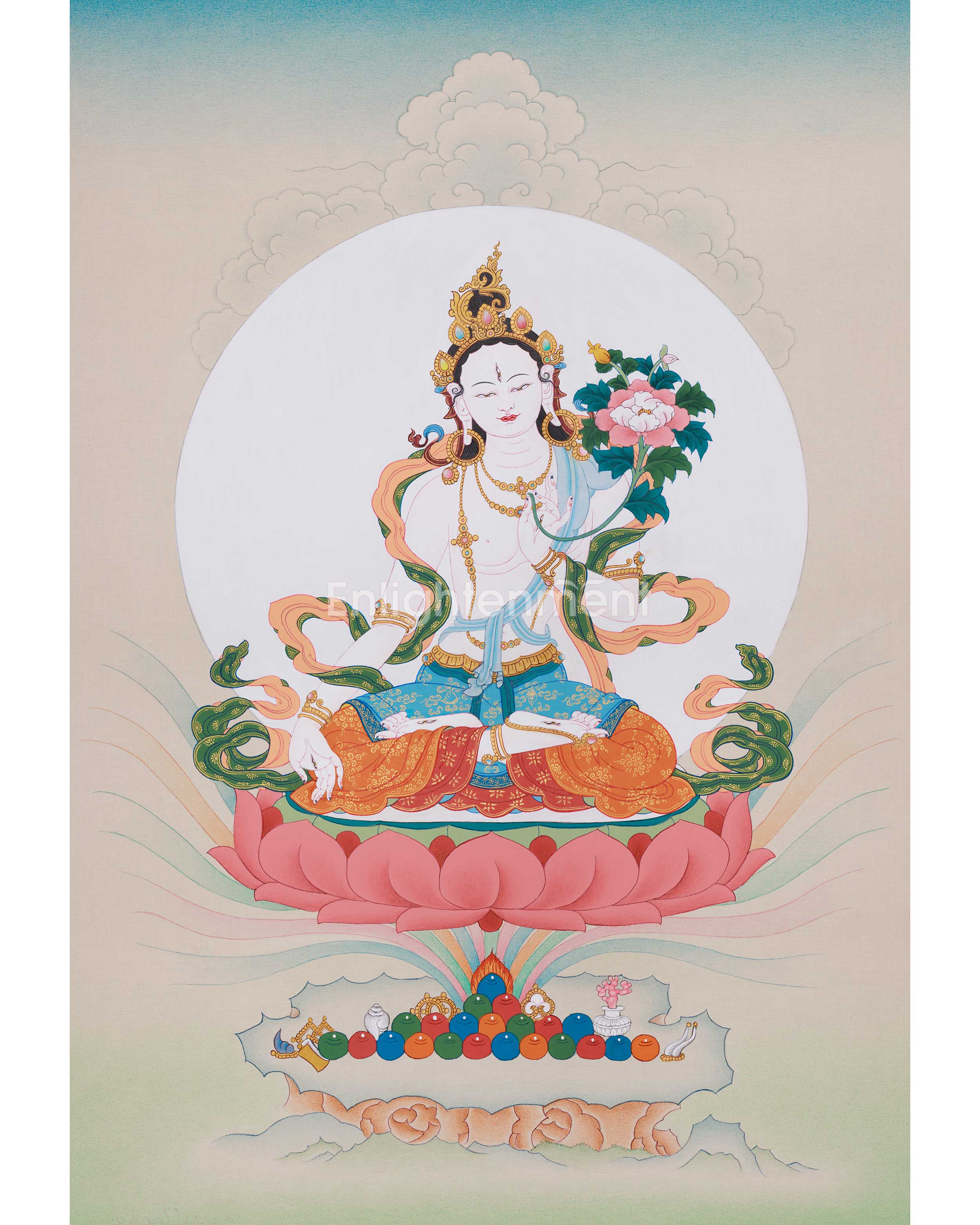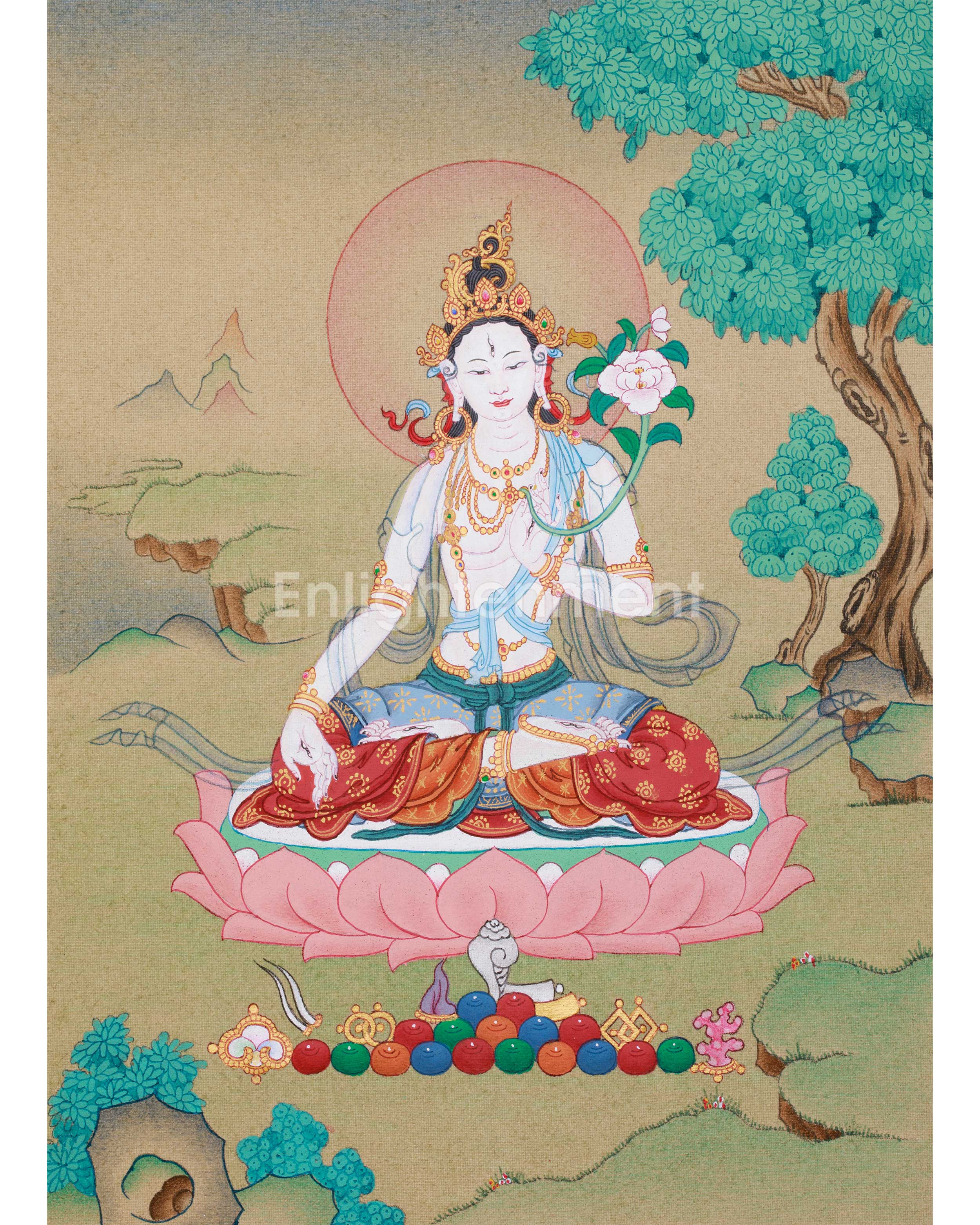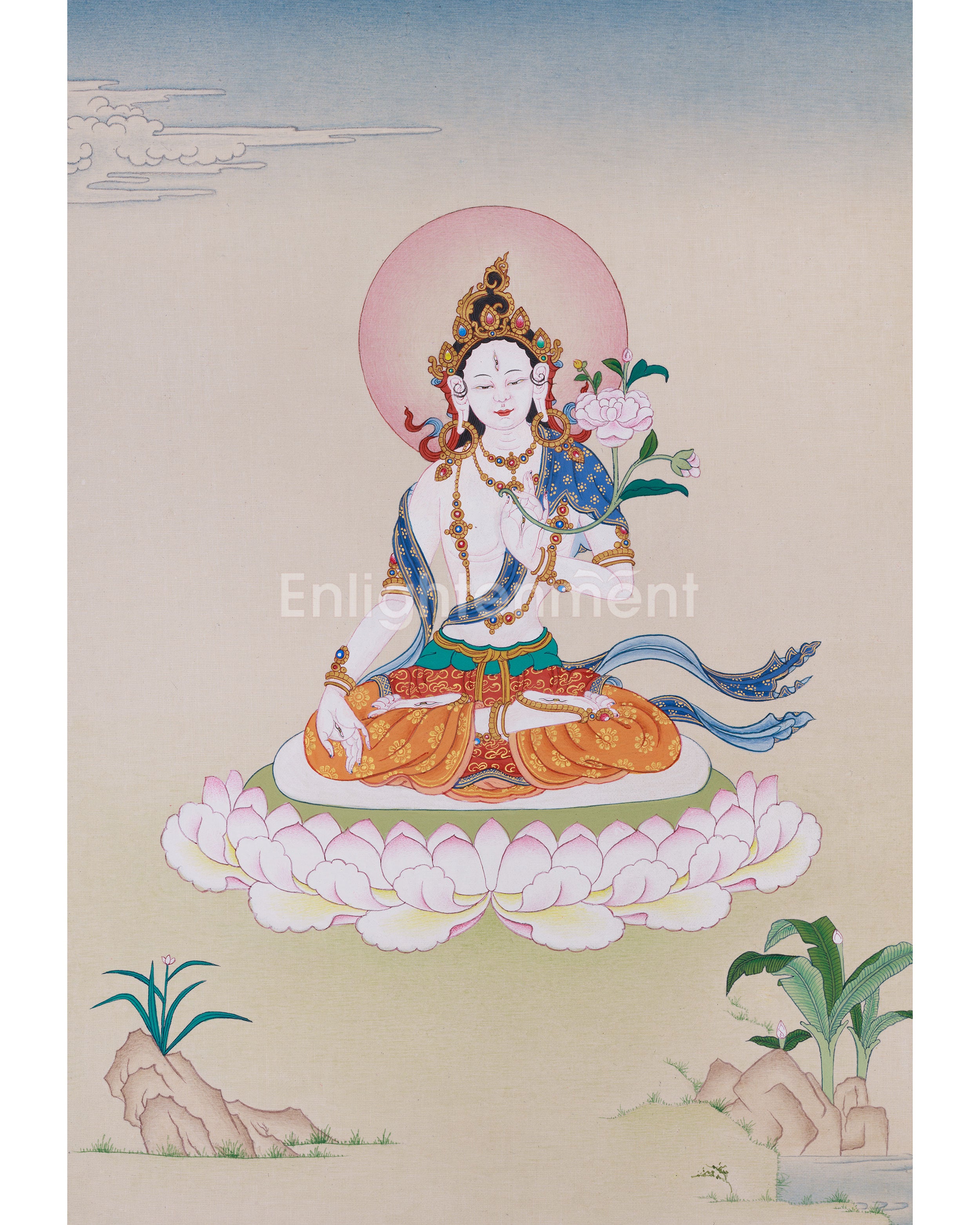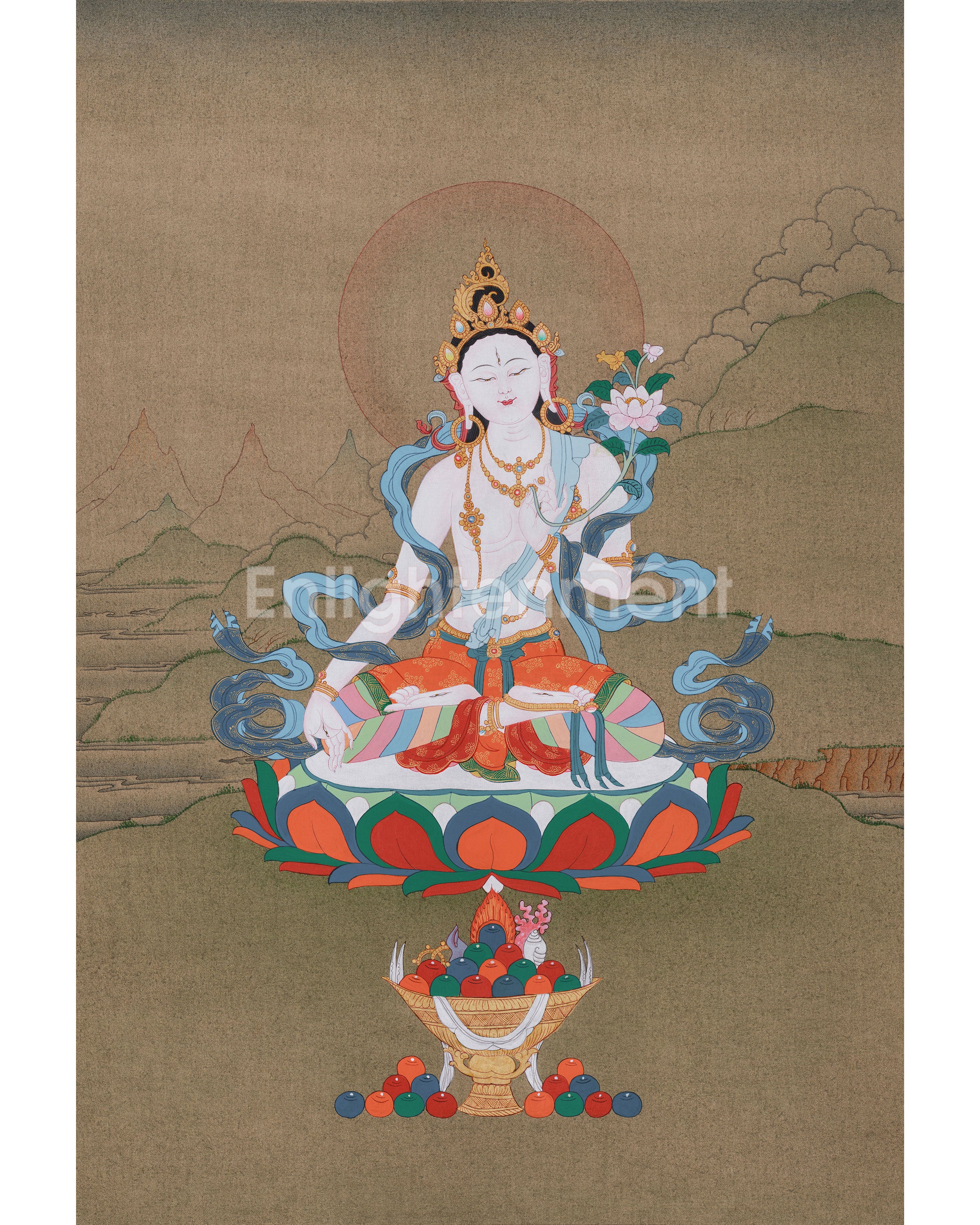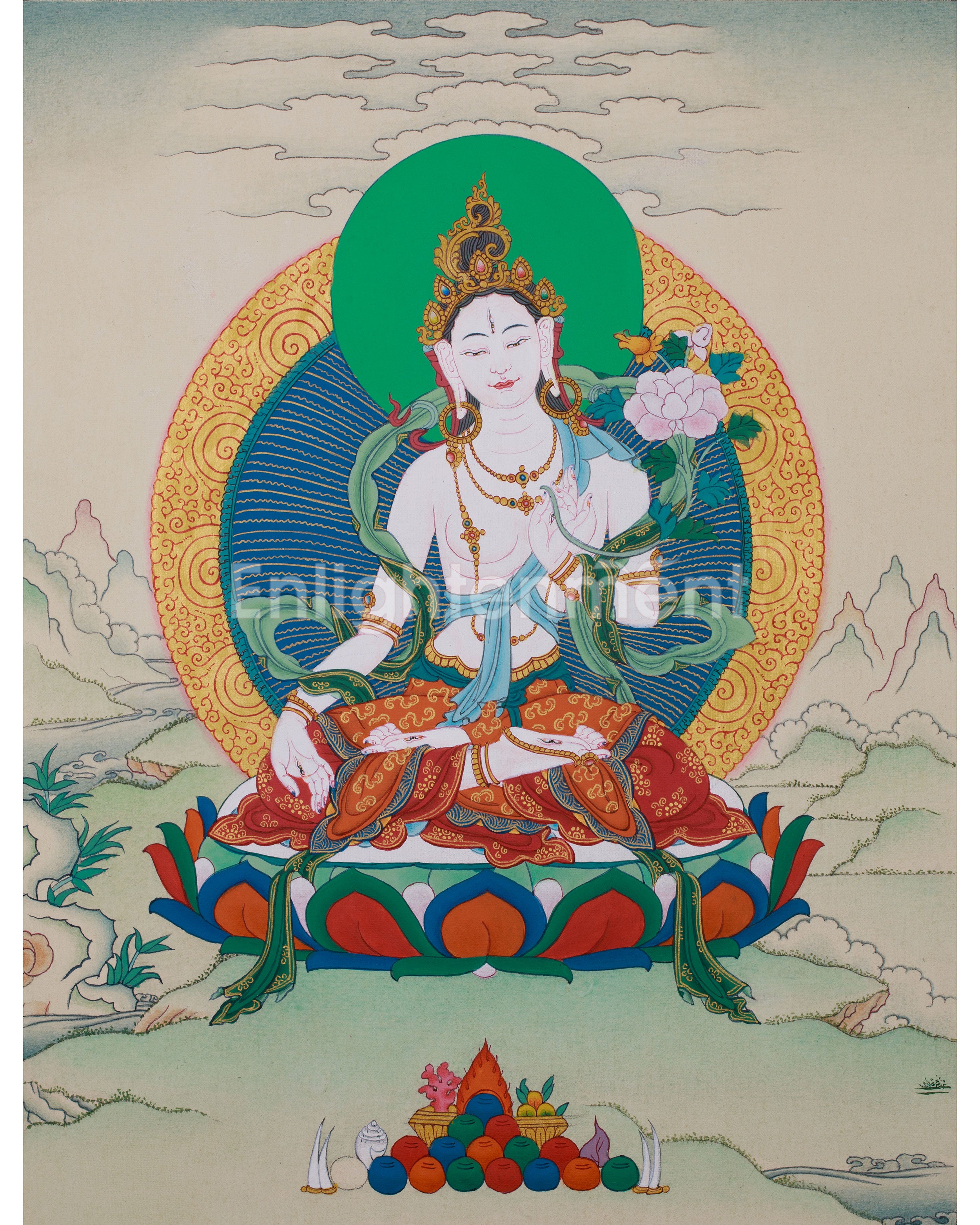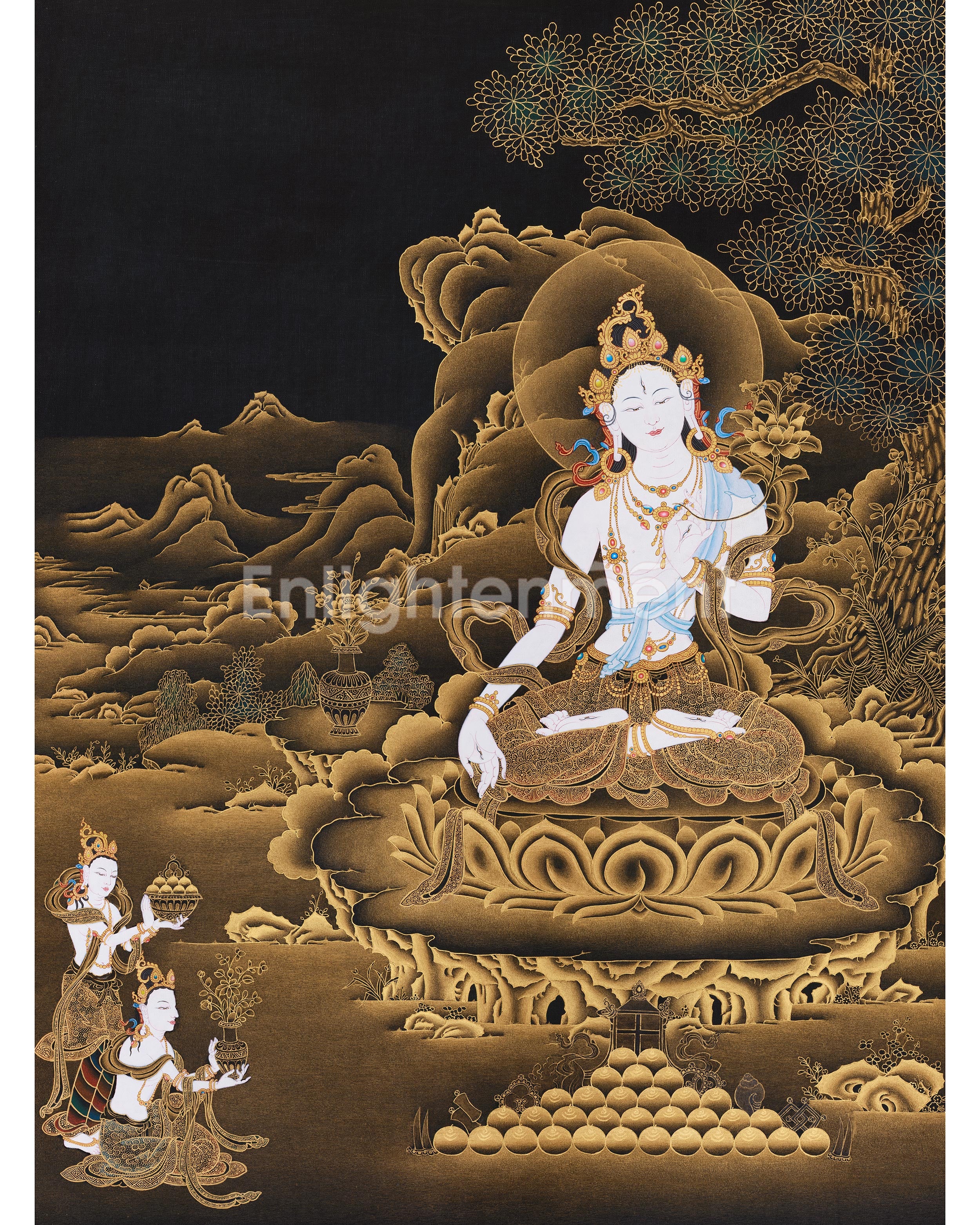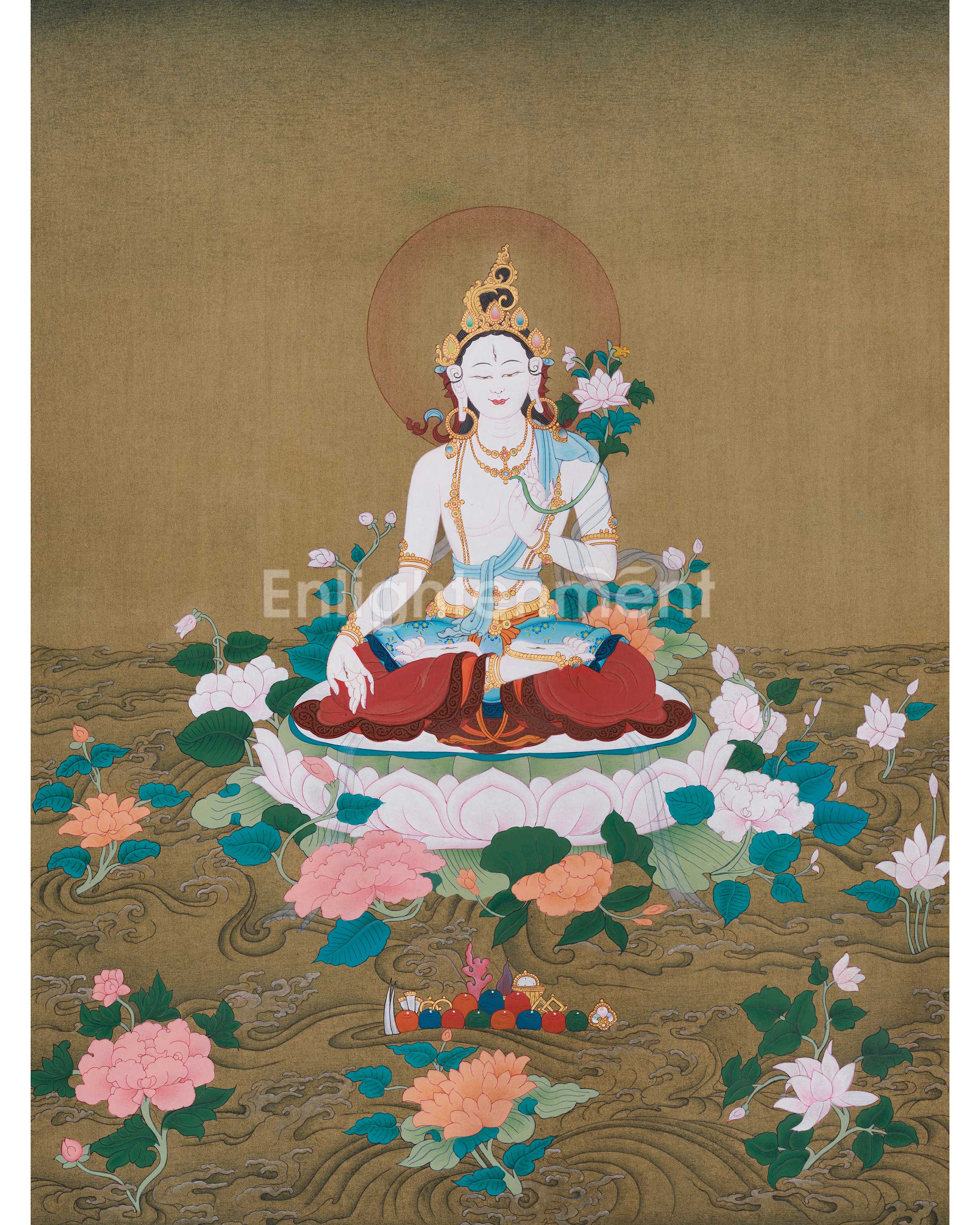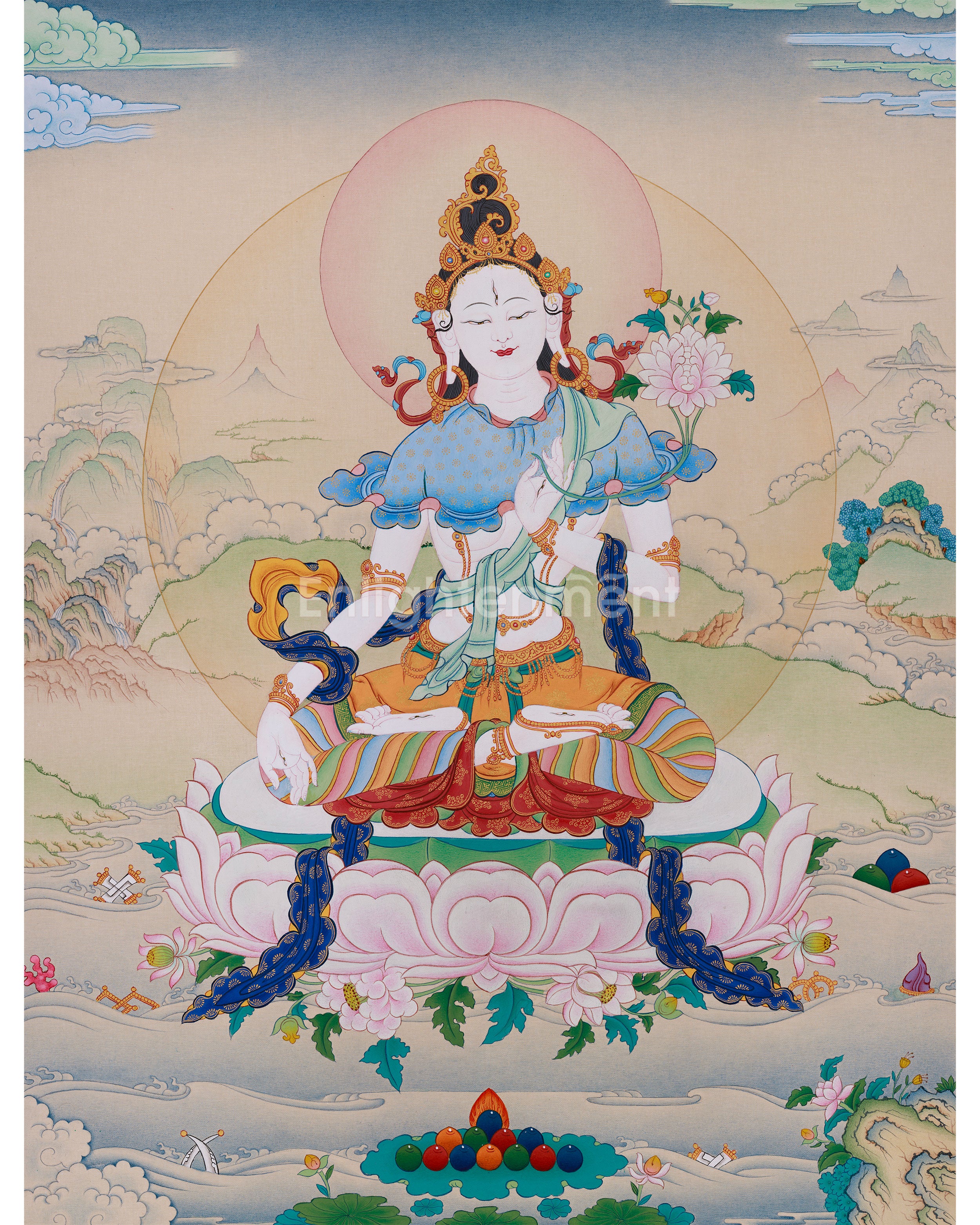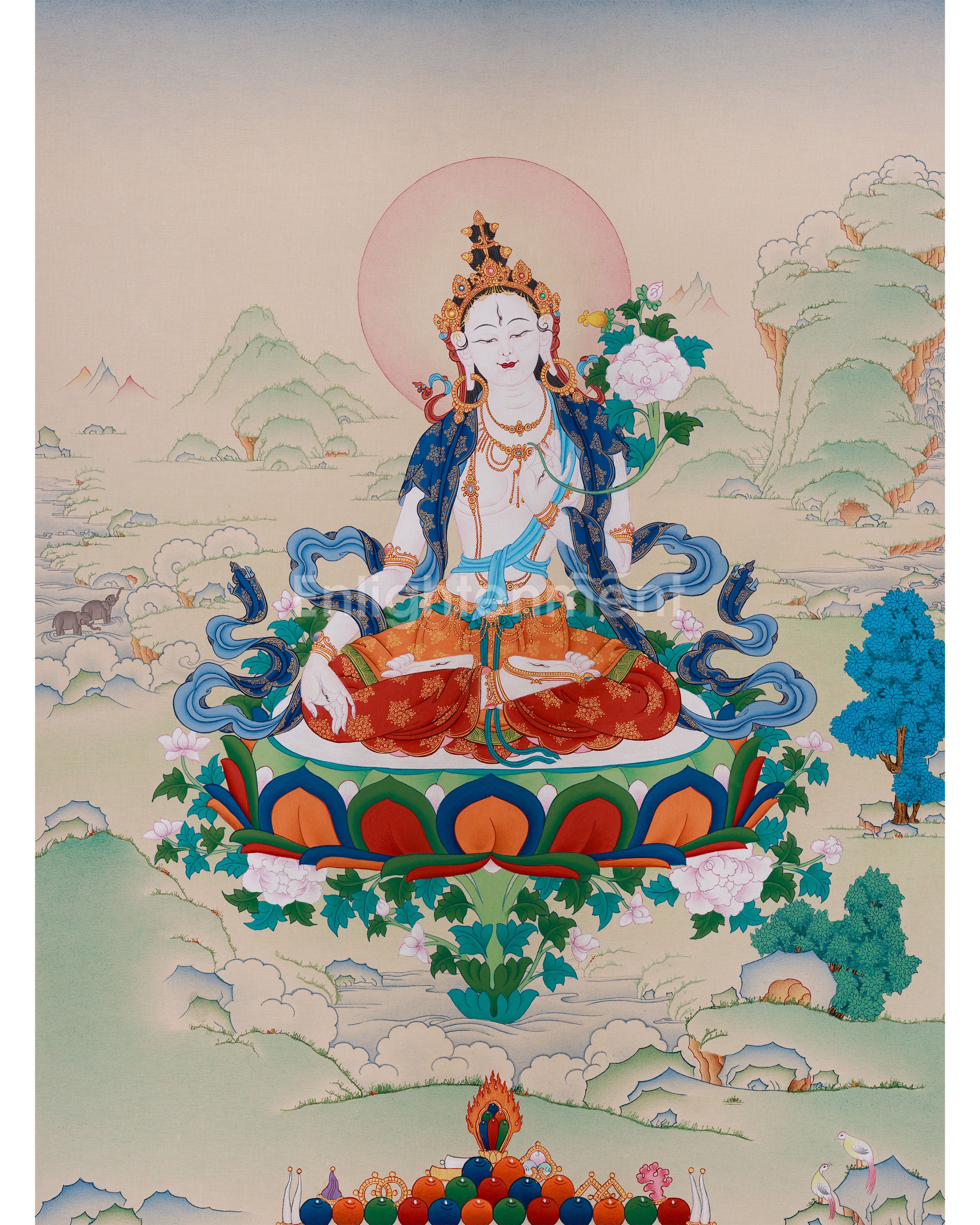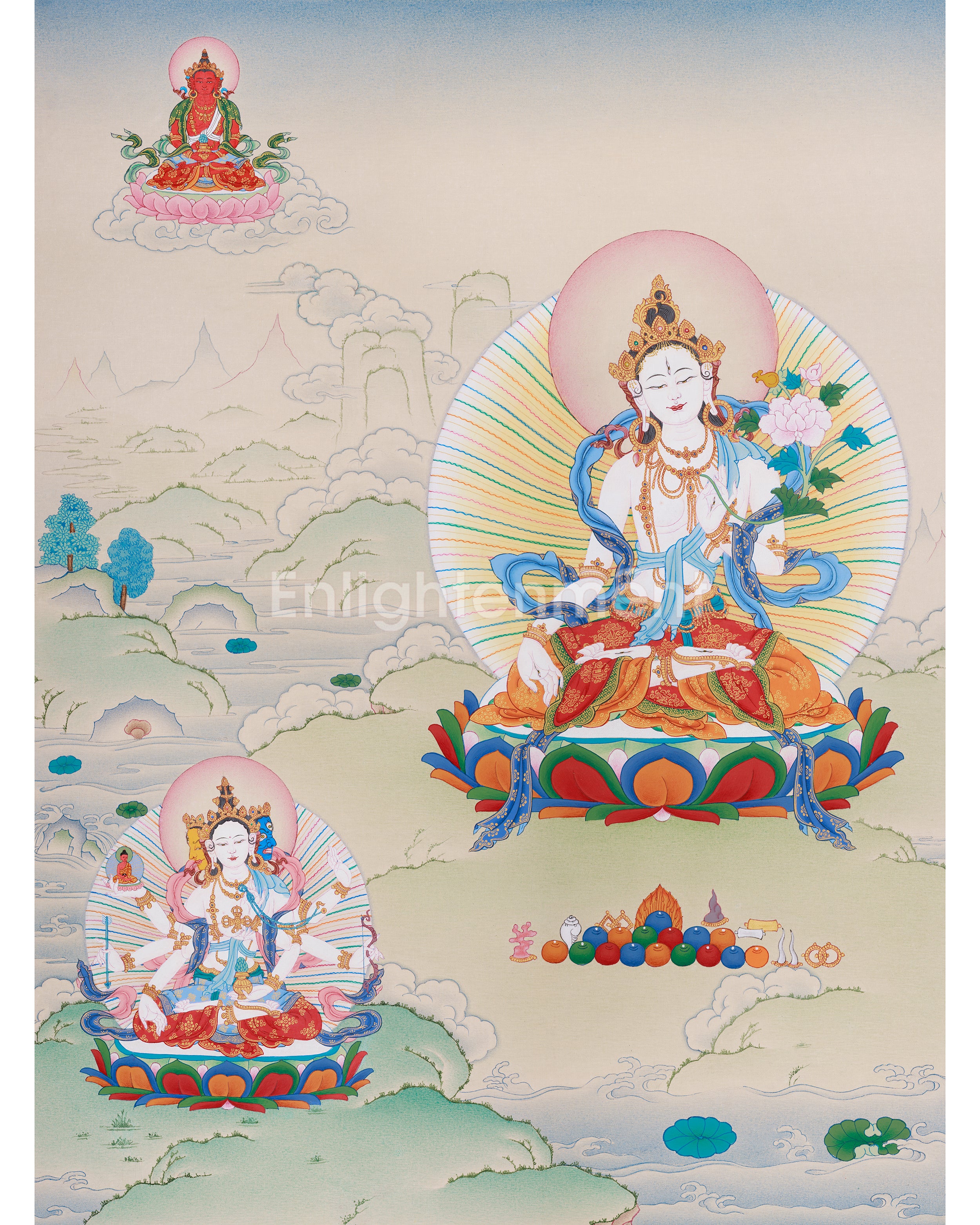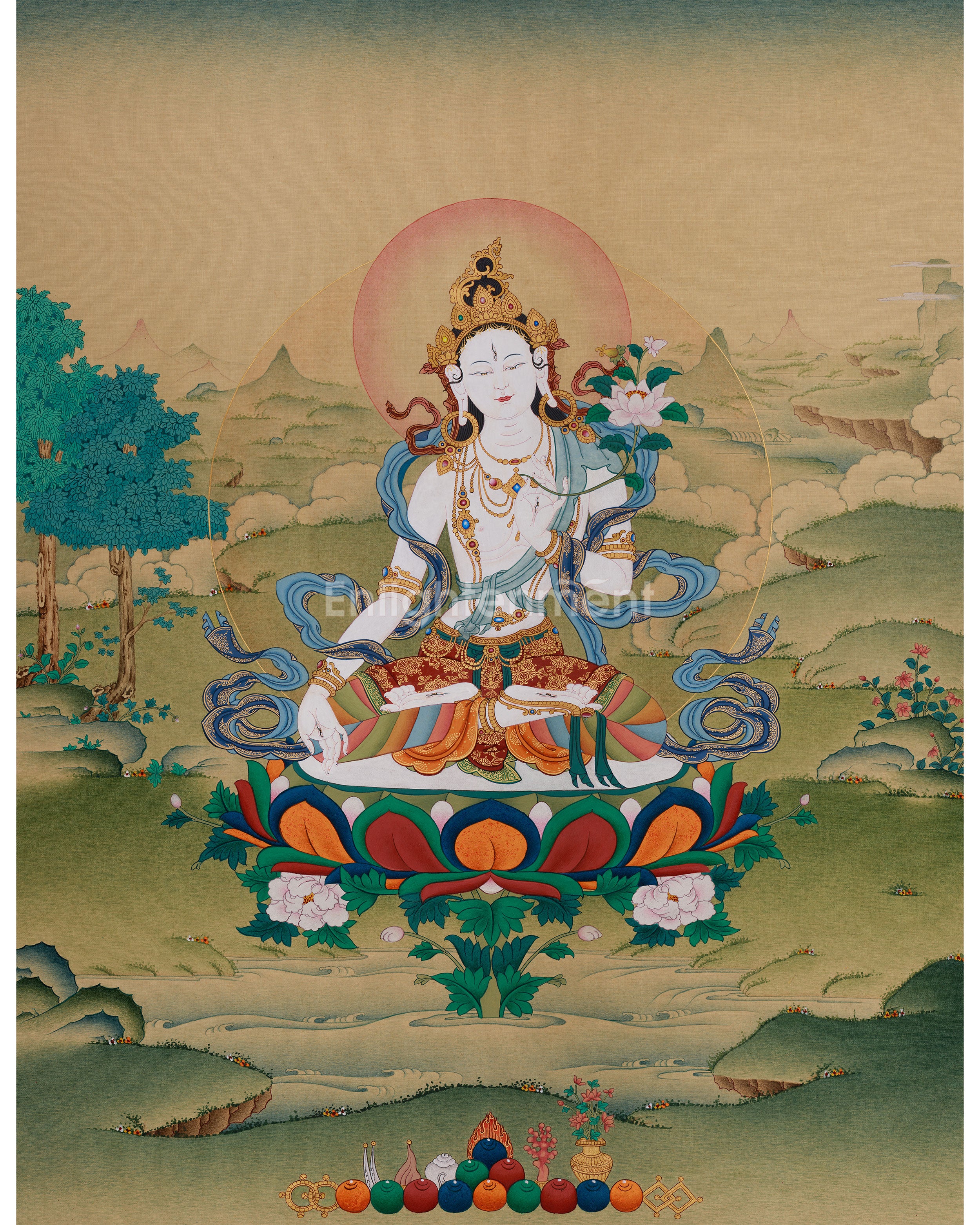Tara
40 products
Showing 1 - 24 of 40 products
Tara Thangka Collection — The Mother of All Buddhas in Her Divine Forms
Explore our curated collection of authentic Tara Thangka paintings, featuring a wide range of sacred depictions including Green Tara, White Tara, Red Tara, 21 Tara and more — each hand-painted with precision, devotion, and iconographic accuracy by experienced Himalayan artists.
Who is Tara?
In Tibetan Buddhism, Tara is revered as the embodiment of enlightened activity and the swift liberator from suffering. Known as the "Mother of All Buddhas," Tara appears in 21 primary manifestations. Each emanation represents a unique activity or quality such as protection, longevity, compassion, or power. Tara Thangkas are visual gateways for invoking these enlightened energies during meditation, daily practice and devotional offerings.
Green Tara Thangka – The Swift Saviouress
Green Tara is the most widely venerated form of Tara. She is known for her swift compassionate activity and her ability to protect practitioners from fears, obstacles, and eight great dangers. She is portrayed with one leg slightly extended, always ready to act. A Green Tara Thangka is considered a powerful protector and an essential visual support for one's dharma practice.
White Tara Thangka – The Goddess of Long Life and Healing
White Tara symbolizes longevity, compassion, and healing. She is depicted with seven eyes — on her palms, soles, and forehead — representing her all-seeing wisdom and omnipresent care. Practitioners rely on White Tara Thangka to promote spiritual and physical healing, long life, and inner peace.
Red Tara Thangka– The Mother of Power and Magnetizing Energy
Red Tara is associated with magnetizing influence, love, and control over inner and outer phenomena. Her form radiates powerful, dynamic energy — often invoked in practices aimed at overcoming inner doubts and manifesting beneficial circumstances. A Red Tara Thangka is both visually captivating and spiritually potent.
21 Taras Thangka:
These thangkas represent the 21 emanations of Tara, each with unique colors, gestures, and attributes. These forms are described in the 21 Praises to Tara (Sanskrit: Tara Ekavimshati Stotram), and each is invoked for specific spiritual benefits—from protection to purification, wealth to wisdom.
Practice Benefits:
-
Overcoming fear, illness, and spiritual obscurations
-
Increasing longevity, merit, and realization
-
Receiving swift aid in worldly and spiritual matters
Our Tara Thangka Collection Includes:
-
Traditional Karma Gadri Style Tara Thangkas
Soft landscapes, open composition, delicate lines -
Gold on Black Tara Thangkas
Rare, elegant, and ideal for collectors and advanced practitioners -
Stone Color Thangkas with Natural Pigments
Painted on handmade canvas by skilled artists from Nepal and Tibet -
Miniature and Large-Scale Masterpieces
From altar-size thangkas to gallery-size paintings
Why Choose a Tara Thangka from Enlightenment Gallery?
-
Authentic iconography rooted in lineage texts
-
Hand-painted by master artists using mineral and 24K gold pigments
- Carefully packed and delivered Free globally with care
